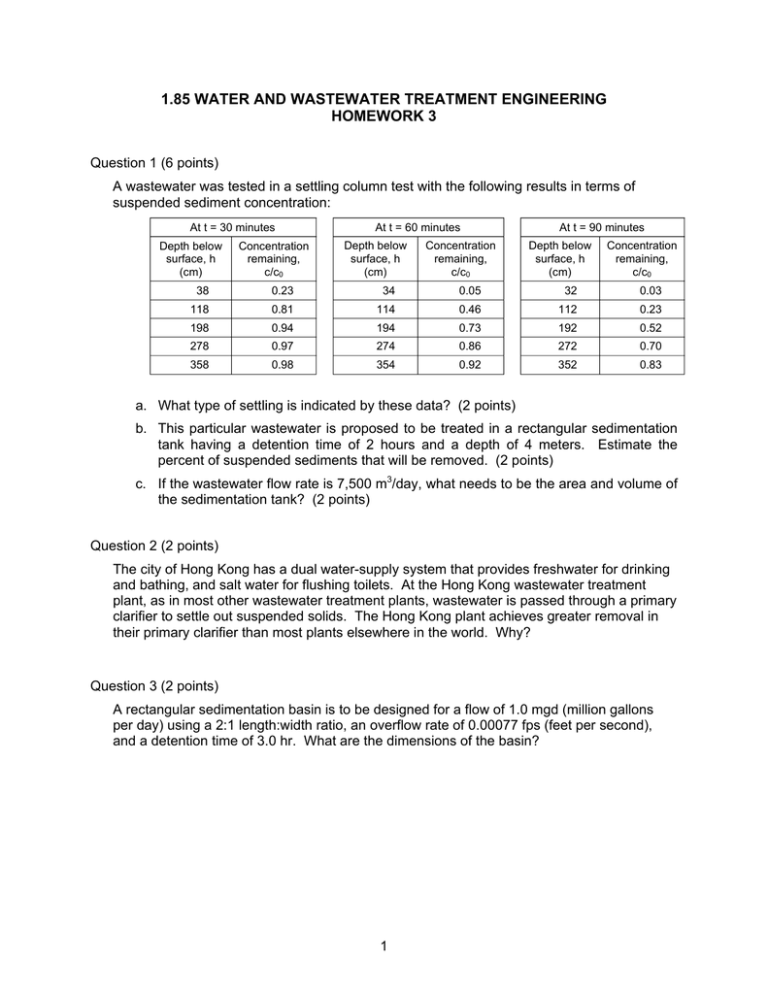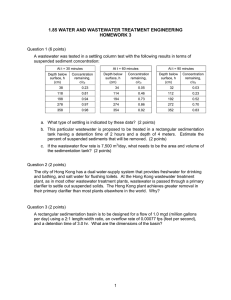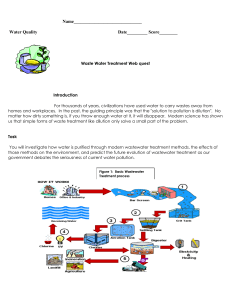1.85 WATER AND WASTEWATER TREATMENT ENGINEERING HOMEWORK 3
advertisement

1.85 WATER AND WASTEWATER TREATMENT ENGINEERING HOMEWORK 3 Question 1 (6 points) A wastewater was tested in a settling column test with the following results in terms of suspended sediment concentration: At t = 30 minutes Depth below surface, h (cm) Concentration remaining, c/c0 At t = 60 minutes Depth below surface, h (cm) Concentration remaining, c/c0 At t = 90 minutes Depth below surface, h (cm) Concentration remaining, c/c0 38 0.23 34 0.05 32 0.03 118 0.81 114 0.46 112 0.23 198 0.94 194 0.73 192 0.52 278 0.97 274 0.86 272 0.70 358 0.98 354 0.92 352 0.83 a. What type of settling is indicated by these data? (2 points) b. This particular wastewater is proposed to be treated in a rectangular sedimentation tank having a detention time of 2 hours and a depth of 4 meters. Estimate the percent of suspended sediments that will be removed. (2 points) c. If the wastewater flow rate is 7,500 m3/day, what needs to be the area and volume of the sedimentation tank? (2 points) Question 2 (2 points) The city of Hong Kong has a dual water-supply system that provides freshwater for drinking and bathing, and salt water for flushing toilets. At the Hong Kong wastewater treatment plant, as in most other wastewater treatment plants, wastewater is passed through a primary clarifier to settle out suspended solids. The Hong Kong plant achieves greater removal in their primary clarifier than most plants elsewhere in the world. Why? Question 3 (2 points) A rectangular sedimentation basin is to be designed for a flow of 1.0 mgd (million gallons per day) using a 2:1 length:width ratio, an overflow rate of 0.00077 fps (feet per second), and a detention time of 3.0 hr. What are the dimensions of the basin? 1







